
I have long advocated that with correct technique one can catch fish, and more than likely a lot more fish, using finer tippets; a recent trip to Lesotho proved the ideal setting to experiment a little and push the boundaries a tad further.
Regular readers of this blog will no doubt remember a piece from some time back, a somewhat mathematical exercise in evaluating the best way to play fish, particularly with light tippet in mind. https://paracaddis.wordpress.com/2018/01/18/trout-torque-or-thoughts-on-playing-fish/
It is true that one requires different tactics and much heavier tippet in saltwater situations but in freshwater, many of the “snapped off and bent hook open” moans and groans can’t be substantiated by equipment failure, but rather by limitations of the angler.
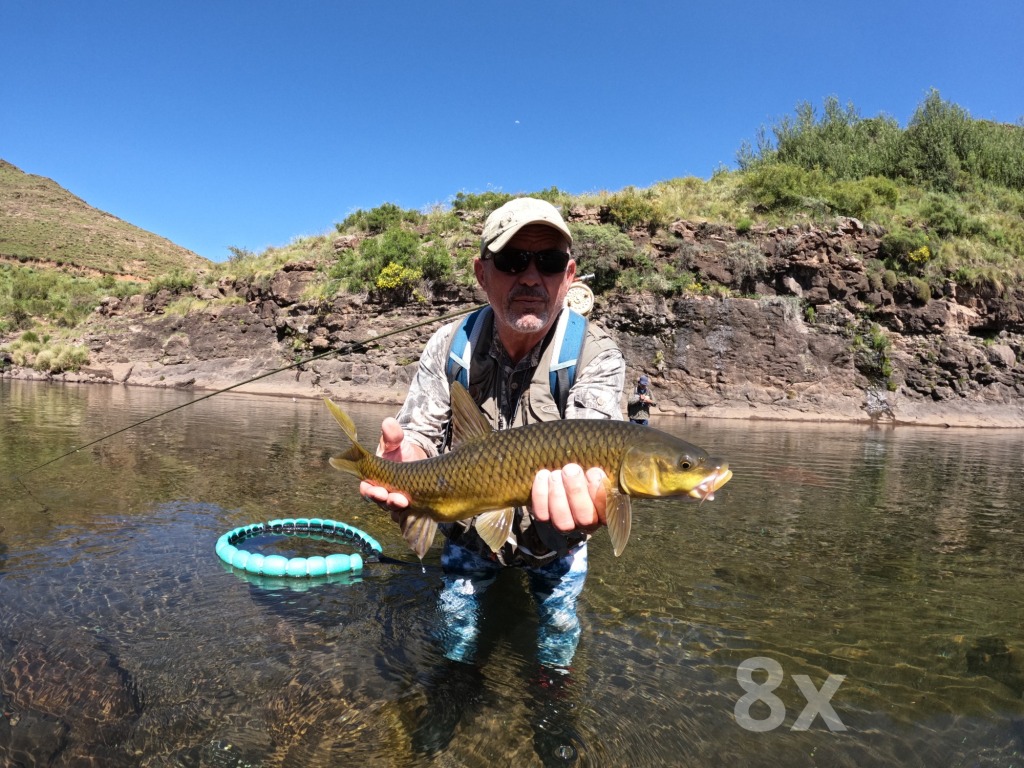
In the above mentioned article I was able to demonstrate that it is near impossible to break even 7X tippet when it is tied to a broom handle, if used in the correct manner. Of course, for the most part stream trout don’t offer up too much of a challenge on this front, although that doesn’t stop me giving all of my clients (usually nervous of the terminal tackle in use) a demonstration of the effects of line and rod angles when playing fish. After all, no guide wants clients to snap off fish, for the sake of the fish, the angler and the guide.
It may be a good point here to provide a link to another blog post from the past on this site referring to line control issues, playing fish is a package, failure on any one point can lead to tears and a dry net. It is a failing that as anglers we tend towards discussion on flies, lines, casting, presentation and more but ignore the techniques which are most likely to assist in landing a fish once hooked. https://paracaddis.wordpress.com/2018/04/09/line-control/
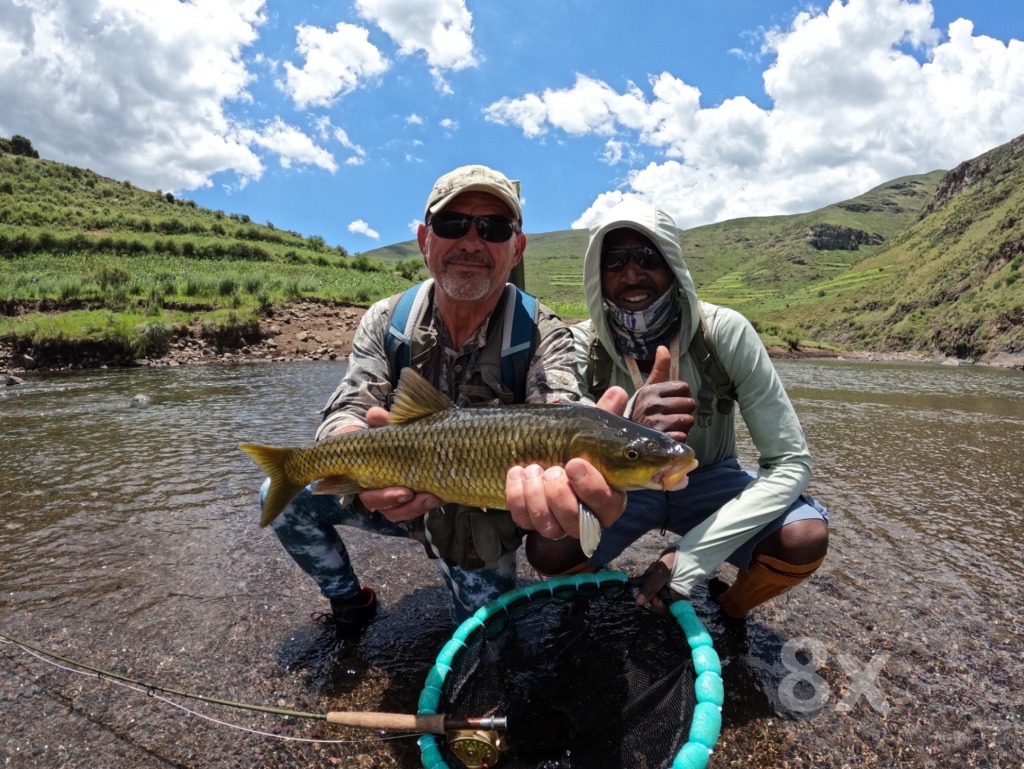
So, a few weeks back I was on the Bokong River in Lesotho chasing smallmouth yellowfish , (Labeobarbus aeneus). Here there are fish which will undoubtedly test your mettle. For one thing they can attain considerable size and equally, for those that don’t know the species, they are incredibly strong, fast and vigorous. They also tend to frequently hold in very strong currents which they put to their advantage. In short, the average smallmouth yellowfish, would drag a trout of similar dimensions about with little effort. They are remarkable fish, fit of fin and as solid as a house brick. Every trip I have done to this venue has seen me blow up the drag on at least one reel, mostly because I can’t afford a Shilton, 😦 but make no mistake that with smallmouth yellows, the hook up is only the start of the game. They will speed off and take you into backing without hesitation, if they get the chance to recover in the oxygenated waters of the pockets they are more than likely to take off and do it all again. These are not trout in another colour, they are serious quarry and can test tackle, tippets and patience in equal measure.
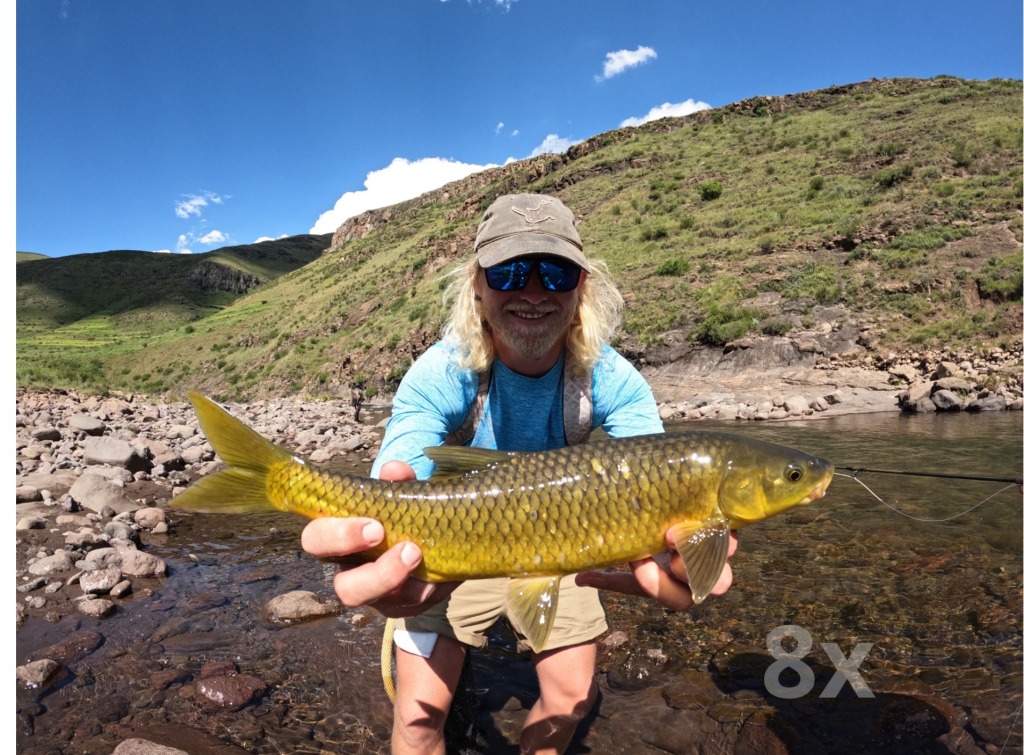
It happened that we had caught plenty of fish, an excess of fish to be honest, and we would entertain ourselves by restricting our activities to “dry fly only” or “pockets only” or whatever distraction we might dream up to keep things interesting.
It was at this point that I suggested that I was going to catch a yellowfish on 8x tippet, and immediately some of the more experienced crew as well as the guides guffawed into their beers and coffees and declared the idea close to insane.
To be fair, my original intention was to only catch one small yellow to show it was possible and then revert to 5 or 6X which is pretty much viewed as standard in these parts.
It so happens that I really like fishing dry flies, and all the more so on long leaders and fine tippets, you just get so much better presentation and it is something that I am used to and comfortable with. I should mention that I also exclusively use Stroft GTM for my dry fly work and have immense confidence in the stuff. Plus I have great confidence in “The Penny Knot” showed to me by Tasmanian fishing guide and Master Caster Peter Hayes, it is the only knot I now use for linking the fly to the tippet. Also previously reviewed on this blog https://paracaddis.wordpress.com/2013/10/26/in-for-a-penny/
I was quietly confident that I could manage at least one small yellow on the gear.
It turned out that the episode was as educational to me as it was to the guides, I hooked and landed a moderate yellowfish and (being lazy) carried on only to hook a larger one, and then a larger one still. Everyone (including myself to a point) was amazed by this success rate, I landed fish of all sizes and in fact never went back to the heavier terminal tackle for the remainder of the week.
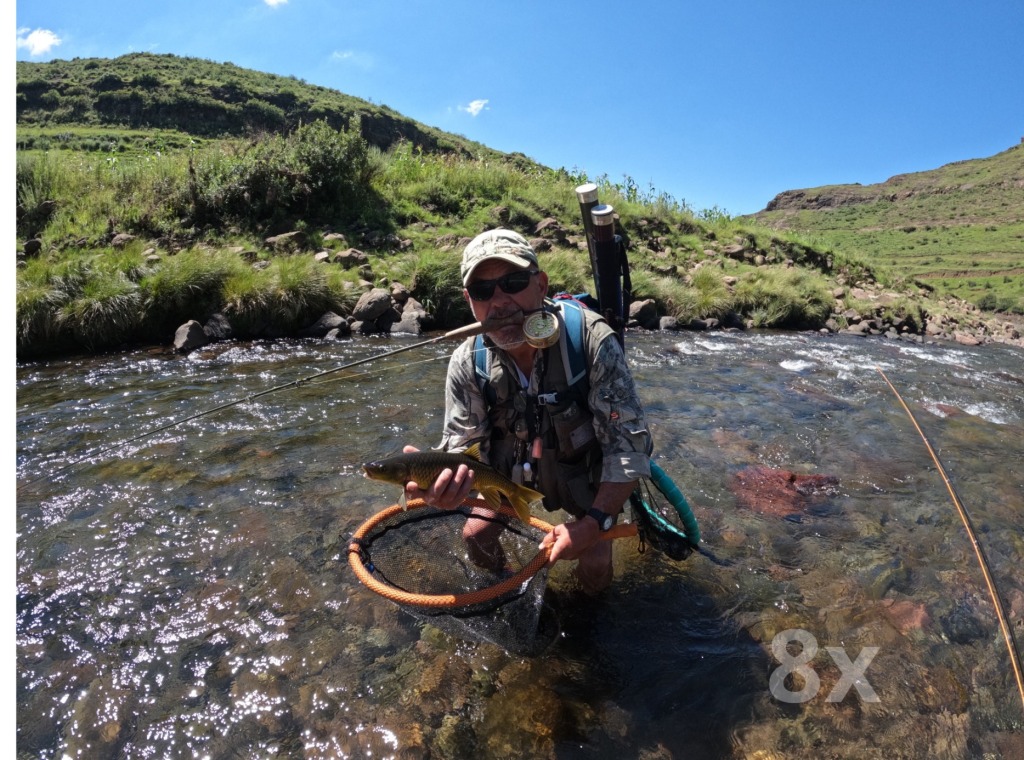
Did I break off some fish? Yes but then everyone does, (the average trout angler has little concept of how hard these yellowfish fight), and much of that is due to abrasion of the leader on the rocks in the rapids. Often times it would be the case that the leader parted in the 6x or 5x section and not at the tippet, an indication that it was abrasion more than tippet strength which was the limiting factor.
On one day I was able to demonstrate to the guides that I could, at least some of the time, steer the fish and even bully them on this fine tippet, you just need to be ready to let go if they get a bit upset, I am pretty sure that the guides had something of “a moment”, because they had not considered it possible.
The only real limitation that we found was casting to fish along a rock face about 17 meters across river, and here we experienced a number of break-offs directly on, or after the take. I was fishing half a double taper #3 fly line. I do this for reasons which are economic but also to provide additional backing on the reel (I got down to only two turns of backing on a fish earlier in the week). It also helps to reduce line drag in the water. (line drag is an issue, smallmouth yellowfish will run out line like freight trains and can quickly leave you in serious trouble)

We could only just reach the fish against the rock face, with a little bit of backing off the reel and had several fish break us off on the take. It seems that at this point, the drag of the line on or in the water, is enough to provide sufficient tension to snap the tippet no matter what the angler does. Outside of this rather abnormal situation (we are rarely casting dry flies that far on these streams), the 8X held up as well as any other tippet and many of the clients on the trip were somewhat aghast that it was even possible.
To me it simply proves the point, that we spend too much time worrying about casting, tying flies and hooking fish and not near enough on what to do when you actually do hook one. Good technique when playing fish, quality line control, a smooth drag and “soft hands” will allow you to land a lot more fish than you might imagine. Yes fishing 8x to these fish is pushing the limits but it isn’t going beyond those limits most of the time.
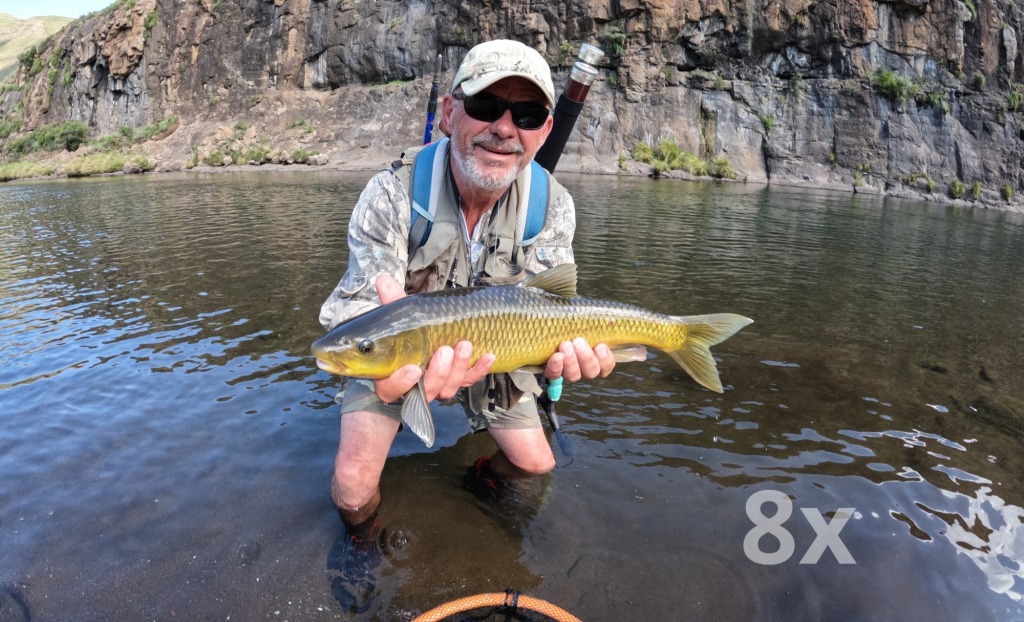
It was an interesting exercise and, as said, I never went back to the heavier stuff for the rest of the trip, the guides, I know, were somewhat set back by this revelation, although I doubt that they are going to recommend it to their clients. But the upshot was that I was able to raise a lot more fish using longer leaders and thinner tippets without actually losing a lot more as a result of the fine terminal gear. All of the fish shown in this post were landed on 8x tippet, makes you think?
A few more points from this exercise:
As you will already know, I don’t believe that softer and lower rated rods mean that you land fish less quickly, in fact the maths shows that done correctly, you land them faster and can apply more pressure (so long as the tippet can handle it).
In fact heavier gear with heavier and thicker lines will provide more drag in the water and are more likely to snap fine tippet.

In the end the exercise was vindication of my limited maths skills, it proved that you can indeed land large and powerful fish on light gear, as or more effectively than heavier stuff if you know what you are doing.
The angler can do little about line drag or rock abrasion, but those things which are within your control will allow you to effectively fish lighter to good effect.
A few points related to fishing fine tippets and light gear:
- It is crucial that the drag on the reel is smooth as silk and set at a point only just sufficient to prevent overwinds. (At one point during the trip my reel drag failed leaving me fishing with a free spooling drum, that made things interesting, but I would rather have no drag than too much)!
I was able to assist several anglers in camp who were losing fish because their drag systems were set far too high.
Additional line control/drag control applied with your reel hand becomes important, you can apply braking and release it far faster than one can adjust the drag on the reel.
Sharp hooks are happy hooks, you require a lot less force to set them on the strike, always sharpen your hooks.- Develop “soft hands”, the ability to hold fish and let go fast if the rod tip gets dragged downwards.
There is a lot more information about playing fish in other articles featured on this blog and I would recommend that you review the articles mentioned previously:
Trout Torque https://paracaddis.wordpress.com/2018/01/18/trout-torque-or-thoughts-on-playing-fish/
Line control: ttps://paracaddis.wordpress.com/2018/04/09/line-control/
The Penny knot: https://paracaddis.wordpress.com/2013/10/26/in-for-a-penny/
Thanks to the guys from African Waters who looked after us so well and the other anglers on the trip who provided great company, entertainment and encouragement.






